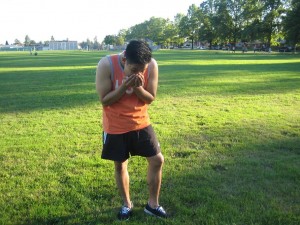Rosacea is a prevalent condition that typically affects facial skin. The condition causes reddening of the nose, cheeks, chin and forehead. After some time, the redness can become intense and takes on a flushed appearance. In addition, the small blood vessels can become conspicuous.
In some cases, rosacea can also manifest on the ears, chest, scalp or neck. If the condition is not treated, reddish solid bumps and pimples filled with pus can develop. Over time, the nose will take on a bulging, inflamed appearance known as rhinophyma. Remember that rosacea can also affect the eyes which cause them to feel irritated and appear watery or bloodshot. In addition, styes can also occur.
Causes of rosacea
The exact cause of rosacea is still unknown but there are various possible theories regarding the cause. In one theory, rosacea might be a constituent of a generalized condition affecting the blood vessels. Others believe that the condition is due to microscopic skin mites, psychological factors, fungus or a glitch in the connective tissue beneath the skin. Even though the exact cause is still undetermined, certain conditions and circumstances can trigger the condition.

Diagnosing rosacea
The doctor performs a thorough examination of the signs and symptoms and note down the medical history of the individual. During the assessment, the individual should discuss any issues with the face.
Who are at risk?
Individuals who have fair skin and tend to blush easily face a higher risk. The condition most often affects women but men have more severe symptoms. A possible reason for this is that men usually delay treatment until the condition is already in an advanced stage.
Signs and symptoms
The appearance of rosacea can vary from one individual to another. In most cases, not all the signs and symptoms occur. If an individual is suspected with the condition, watch out for at least one of the primary signs.
- Flushing or facial redness that comes and goes (earliest indication)
- Persistent redness (similar to a blush or sunburn that does not vanish)
- Pimples and bumps (small-sized solid lumps or pimples filled with pus)
- Visible blood vessels
Other signs and symptoms of rosacea include the following:
- Burning or stinging on the face and itchiness or tightness can also develop
- Eye irritation (eyes appear bloodshot or watery and styes can also develop)
- Plaques
- Dry appearance of the skin
- Thickening of the skin particularly on the nose which leads to a bulging appearance
- Swelling of the face can occur alone or with other symptoms
- Symptoms that affect other body parts such as the chest, neck, ears or scalp.
Management
The available treatment options for rosacea tend to vary since the signs and symptoms vary from one individual to another.
Medications are often prescribed by the doctor such as oral and topical drugs to manage the associated pimples, bumps and redness. These medications control the condition and maintain the state of remission.
In severe cases, surgical intervention might be recommended. The doctor can utilize lasers to remove the visible blood vessels, reduce the extent of the redness on the face or correct any nasal disfigurement.
